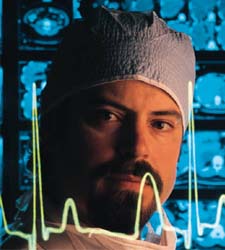Archival Notice
This is an archive page that is no longer being updated. It may contain outdated information and links may no longer function as originally intended.
Home | Glossary | Resources | Help | Contact Us | Course Map
We learn from our earliest experiences with caregivers and significant others that our ability to communicate effectively is essential to our survival. Over time most of us find ways of speaking, gesturing, writing, and acting to make our wants and needs in particular situations known. Differentiating the ways we communicate to diverse audiences such as customers, family, coworkers, and friends is a natural part of this development. However, most of us are unaware of these distinctions and often describe our communication styles in personality terms, such as shy or outgoing and introverted or extraverted. While these characteristics may clearly influence the content and delivery of messages, especially during interpersonal interactions, they fail to capture the essence of communication effectiveness and the dynamic nature of our abilities over the long run. Additionally, the importance of communication to our private happiness and public success fails to receive the necessary attention.
Unfortunately our formal educations, especially within professional fields, tend to concentrate our attention on the communication of complex facts without regard to the target audience. As a result, managers, scientists, physicians, engineers, and others fail to craft their intended messages so that they appeal to readers or listeners. We believe that most people are unwilling or unable to process communications that seem packed with filler, and we are probably right. However, another perspective is lack of interest, which may be caused by our failure to excite them or to build relationships during professional communications, as we often do in our personal connections. The following text reviews the necessary compatibility and potential synergies across verbal and written methods. The topics entitled "Verbal Communication" and "Written Communications" explicitly consider the need to captivate your audience, whether it is a single individual or thousands of colleagues.
Additional Online Courses
- What Every First Responding Officer Should Know About DNA Evidence
- Collecting DNA Evidence at Property Crime Scenes
- DNA – A Prosecutor’s Practice Notebook
- Crime Scene and DNA Basics
- Laboratory Safety Programs
- DNA Amplification
- Population Genetics and Statistics
- Non-STR DNA Markers: SNPs, Y-STRs, LCN and mtDNA
- Firearms Examiner Training
- Forensic DNA Education for Law Enforcement Decisionmakers
- What Every Investigator and Evidence Technician Should Know About DNA Evidence
- Principles of Forensic DNA for Officers of the Court
- Law 101: Legal Guide for the Forensic Expert
- Laboratory Orientation and Testing of Body Fluids and Tissues
- DNA Extraction and Quantitation
- STR Data Analysis and Interpretation
- Communication Skills, Report Writing, and Courtroom Testimony
- Español for Law Enforcement
- Amplified DNA Product Separation for Forensic Analysts


